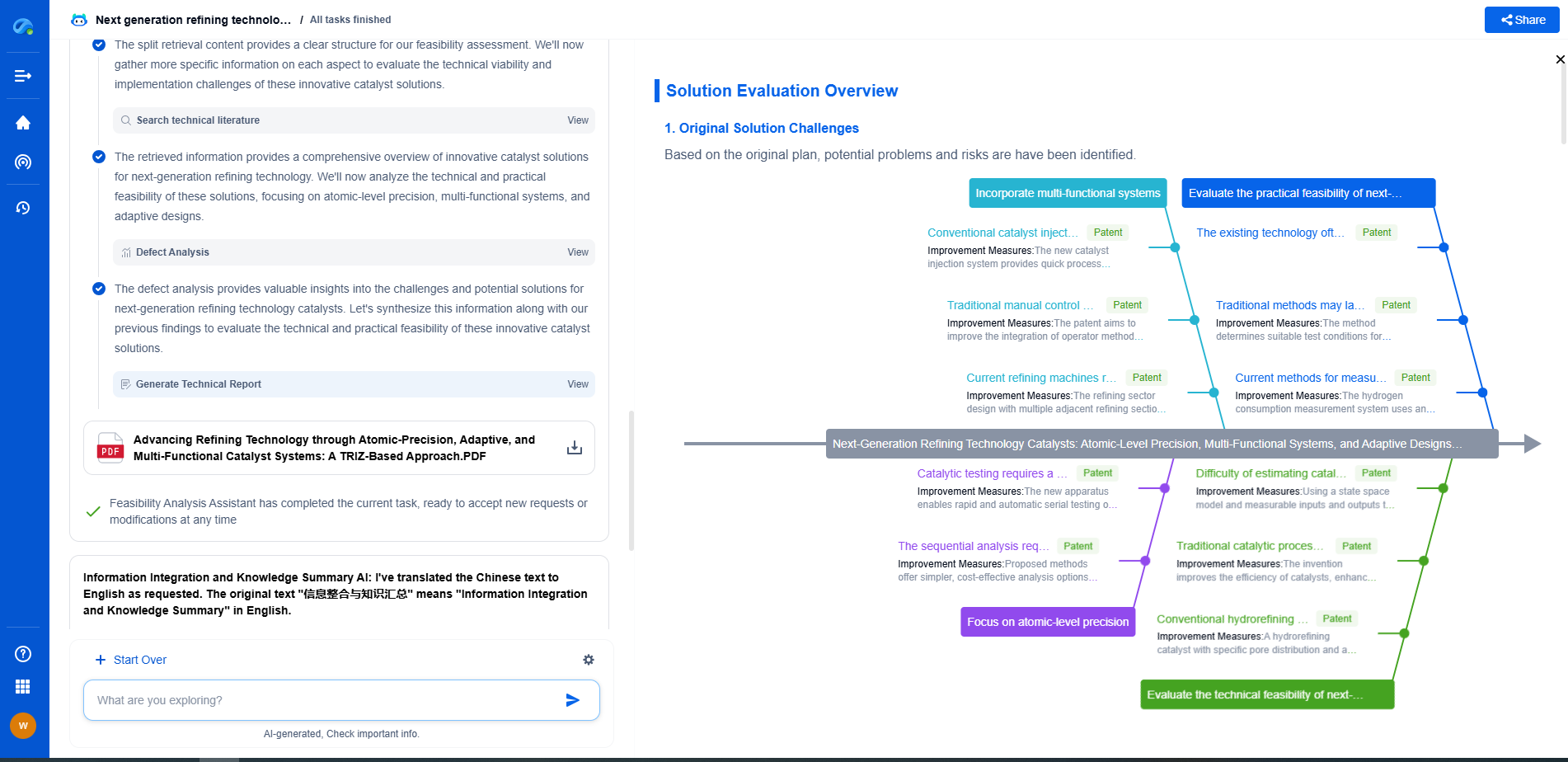Optically Clear PMMA for LED Light Guides
JUL 3, 2025 |
Polymethyl methacrylate (PMMA), commonly known as acrylic, is a transparent thermoplastic often used as a lightweight or shatter-resistant alternative to glass. Its remarkable clarity, high impact resistance, and ability to be easily molded into different shapes make PMMA an ideal material for various applications, including LED light guides. The demand for energy-efficient and aesthetically pleasing lighting solutions has significantly increased the use of PMMA in LED technology.
The Role of Light Guides in LED Technology
Light guides are essential components in LED lighting systems as they direct and distribute light efficiently. They are designed to transport light emitted from an LED source to desired areas with minimal loss. The effectiveness of a light guide depends largely on its material properties, such as clarity and light transmission capabilities. This is where optically clear PMMA stands out as a prime choice.
Advantages of Using Optically Clear PMMA
PMMA offers several advantages that make it suitable for use in LED light guides. One of the most significant benefits is its optical clarity. PMMA allows up to 92% light transmission, which is higher than glass, ensuring that most of the light generated by the LEDs is effectively utilized. This high transmission rate leads to brighter and more efficient lighting solutions.
Another advantage of PMMA is its versatility in manufacturing. It can be easily fabricated into various shapes and sizes, allowing designers to develop customized light guides tailored to specific applications. This flexibility is crucial for creating innovative lighting designs that enhance both the functionality and aesthetics of LED systems.
Durability and Lightweight Nature
In addition to its optical properties, PMMA is known for its durability and lightweight nature. It is more impact-resistant than glass, reducing the risk of damage during installation and transportation. This characteristic makes PMMA-based light guides suitable for applications in environments where robustness is required, such as in automotive lighting or outdoor installations.
Moreover, the lightweight property of PMMA allows for easier handling and installation, reducing labor costs and time. The material's resistance to UV light and weathering also ensures longevity, maintaining its optical clarity over time.
Environmental Impact and Sustainability
As industries move towards more sustainable practices, the choice of materials plays a crucial role. PMMA is recyclable, which aligns with the growing emphasis on environmental responsibility. While the production of PMMA does involve some environmental considerations, advancements in recycling techniques are helping to mitigate these impacts, making PMMA a more sustainable choice for LED light guides.
Applications in Modern Lighting
The use of optically clear PMMA in LED light guides is prevalent across various industries. In automotive lighting, PMMA light guides are used to create intricate and efficient lighting systems that enhance vehicle aesthetics and safety. In architectural lighting, PMMA enables the creation of elegant and energy-efficient installations that transform spaces.
Additionally, in consumer electronics, PMMA light guides are used in displays and devices, where clarity and precision in light distribution are essential. The versatility and efficiency of PMMA make it a staple in the design and development of cutting-edge LED lighting solutions.
Conclusion
Optically clear PMMA plays a pivotal role in the advancement of LED technology. Its superior optical clarity, durability, and flexibility make it an ideal choice for light guides that require efficient and aesthetically pleasing light distribution. As industries continue to push for more sustainable and innovative lighting solutions, PMMA stands out as a material that not only meets these demands but also paves the way for future developments in LED lighting technology.
Transform Polymeric Innovation with Patsnap Eureka
From biodegradable polymers to high-performance composites, the world of polymeric compounds is evolving faster than ever—driven by the demands of sustainability, functional customization, and global IP competition. Whether you're exploring novel copolymer architectures, optimizing polymerization techniques, or tracking material patents in bioplastics, time-to-insight is everything.
Patsnap Eureka, our intelligent AI assistant built for R&D professionals in high-tech sectors, empowers you with real-time expert-level analysis, technology roadmap exploration, and strategic mapping of core patents—all within a seamless, user-friendly interface.
Whether you're working on next-gen packaging films, bio-based resins, smart polymers for electronics, or new thermal-resistant composites, Eureka accelerates your journey from idea to patent to product—with unmatched clarity and speed.
🔍 Experience how Eureka can power your polymer R&D with AI intelligence—start your free trial today and unlock the future of materials innovation.
- R&D
- Intellectual Property
- Life Sciences
- Materials
- Tech Scout
- Unparalleled Data Quality
- Higher Quality Content
- 60% Fewer Hallucinations
Browse by: Latest US Patents, China's latest patents, Technical Efficacy Thesaurus, Application Domain, Technology Topic, Popular Technical Reports.
© 2025 PatSnap. All rights reserved.Legal|Privacy policy|Modern Slavery Act Transparency Statement|Sitemap|About US| Contact US: help@patsnap.com

